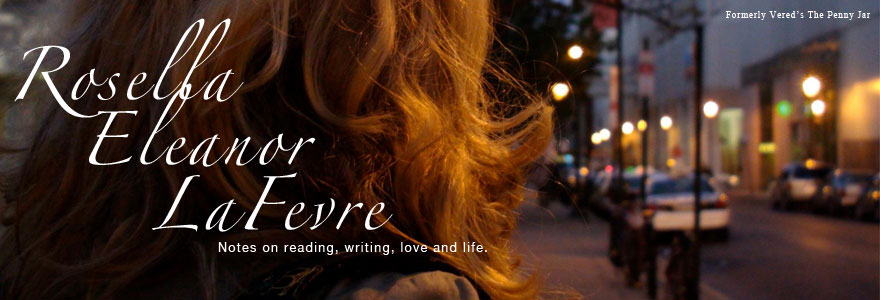 |
Batcha, a newspaper editor, says journalists should
view the world through "story goggles."
(Eye candy courtesy of weheartit) |
Today in Magazine Article Writing class, we had a visitor: Becky Batcha, features editor at the
Philadelphia Daily News. Batcha, who got her start in trade magazines and has since freelanced and edited at national glossies, daily newspapers and weekly alternatives including the
Boston Pheonix and the now-defunct
Child magazine. During her talk in our class, this sometime Temple University adjunct professor, talked about how to find story ideas, especially trend story ideas.
"Philosophically, you just need to have your eyes and ears open," Batcha said. You have to wear story goggles, Batcha said. This means you have to be prepared to view the world differently than normal people. To illustrate this point, she put on a pair of oversized black-framed glasses. As a journalist, "you need to be able to spin a story out of just about anything," Batcha said.
You have to know what makes a good story. For trend stories, the idea has to be new. "Anything that makes you say 'huh' might be a story idea," Batcha said.
Next, she showed us some clips she'd written and pieces she'd edited and explained where the ideas came from.
One such example she provided was the source of a story she edited, entitled "Childhood: The New Battleground State," which won the 2007 Clarion Award for magazine coverage of a major news event. This story, about how the nastiness of politics trickles down to students in elementary school, came from an anecdote a friend told Batcha over dinner. Batcha's friend's child came home from school and said that they couldn't vote for Al Gore because he was a baby killer. This anecdote got Batcha's wheels turning and she assigned the story to writer Susan Warner.
Just last week, she went for a walk around her block and noticed that the Halloween decorations weren't just black and orange but green and purple. From this "germ," she came up with a story for the
Philadelphia Daily News on the change.
Then she provided examples of how she'd put together a trend story. One such example was this:
Batcha, who is a firm believer in reading everything you can get your hands on, read this tidbit in Leslie Kaufman's article, "
Stone-Washed Blue Jeans (Minus the Washed)" which ran in the
New York Times yesterday: "To customers seeking further advice, Levi Strauss suggests washing jeans rarely, if at all — the theory being that putting them in the freezer will kill germs that cause them to smell." After reading that, she got to thinking about a couple of other trends she'd heard about: Those with curly hair are shampooing less frequently because they believe it's better for their hair. And her son, who's in college, told her that people aren't using deodorant. The three of these together would make a great story called "Permission to Be Totally Gross? Granted." for a female consumer magazine.
A couple of other things she shared with us:
For her first pitch, she read a lot written by the editor she wanted to pitch and channeled her voice when she wrote her pitch. Of course, she'd also done a ton of research.
LexisNexis is a great resource; any idea you get you should check on Nexis to see if it's been covered.
"Every magazine editor reads the New York Times every day," Batcha said. And we should too, she asserted.
Finally, cold calling and cold pitching works! The editors don't need to know you as long as you can prove you're a good writer.










